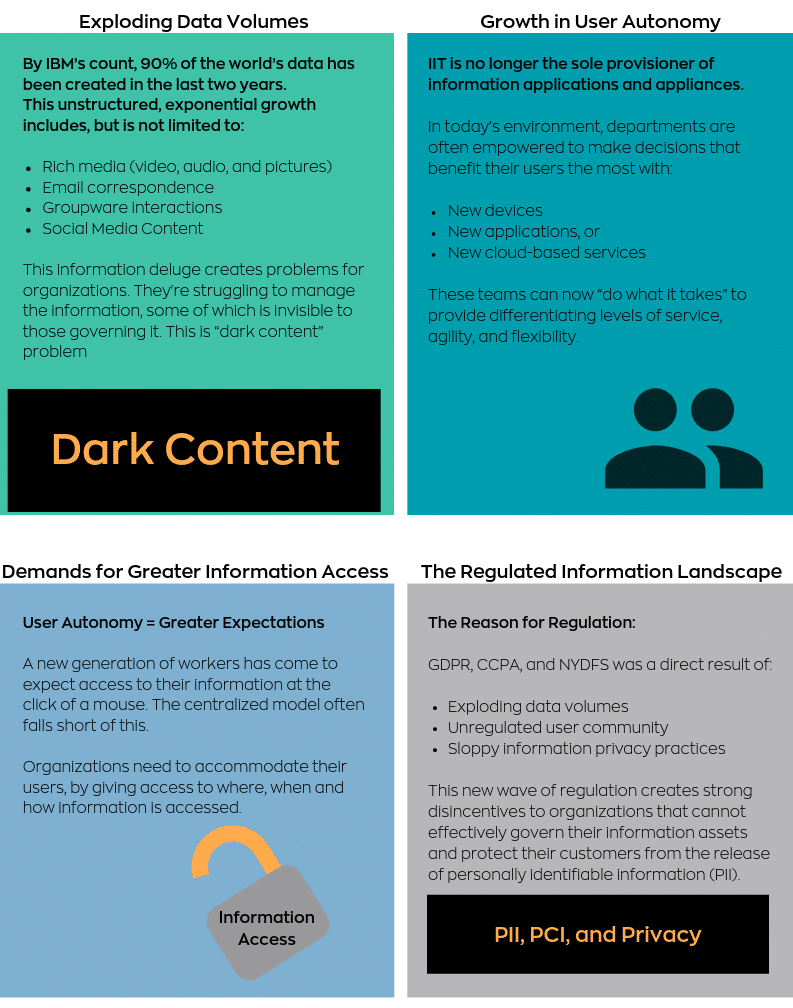The role of Federated Information Governance
The history of Document Management (DM) and Enterprise Content Management (ECM) has been one of almost continuous change. Since the inception of DM / ECM principles in the paper and microfiche era, the digitization wave of the 1980s and 1990s, market maturity in the 2000s, and cloud evolution in the 2010s, these disciplines consistently adapted to meet the needs of content- and process-driven organizations and industries.
While these disciplines changed with the times, one aspect of information management remained the same: The centralized model. The ECM / DM model has traditionally based its governance approach on funneling all content – physical documents, microfilm facsimiles, digital files and their rendition – through a centralized hub called a Content Management System (CMS).
The centralized CMS remains a fixture of ECM / DM and will likely always play a critical role in information management. Today, however, new developments call for a nuanced approach that can combine both centralized and decentralized methods of information management. Some of these developments include:
- Exploding Data Volumes
- Growth in User Autonomy
- Demands for Greater Information Access
- A More Tightly-Regulated Information Landscape Exploding Volume.
These challenges are not unsolvable, nor are they inconsistent with a coherent and effective centralized DM / ECM strategy. Instead, they require supplementing a strategy with tools that combine support for both centralized and decentralized models of information governance. Here are some ways to tackle the hurdles:
- Connect to the Places Where Content is Exploding: Organizations must accommodate, rather than ignore, the issues that come with exploding information. Information ignorance exposes the organization to dysfunction, fines, and lawsuit liability. This is detrimental to customer trust and is financially crippling. Connecting the sources of content and data growth is critical. This means connecting structured applications like CRM, ERP, etc. as well as file servers, email systems, groupware platforms, social media, and others. Combining this federated approach with the centralized ECM / DM will provide good visibility into the type of content being created and disseminated across the entire enterprise.
- Allow the Organization to Operate Freely: The “genie” of self-service IT infrastructure cannot be put back into the figurative bottle. Indeed, the pace of operations demanded in the marketplace today makes these tools a virtual necessity. Rather than resisting them, records managers and compliance staff must embrace them, and bring them under their oversight using the federated governance model described above. In so doing, they can extend the benefits of centralized ECM / DM even to the far-flung corners of the organization that were previously ungoverned, and where content is growing in ways that are unseen and potentially dangerous. This approach brings the benefits of governance without imposing restrictions on the operation that may be inconsistent with their day-to-day mandate.
- Provide a Single View into Data, Wherever it Lives: Providing a single view allows information managers to navigate far-flung data sources, identify sensitive information (including personal information, proprietary information, and redundant or obsolete content), and take action. A single interface also provides a beacon with which to illuminate dark content, shining a light on both the centralized ECM / DM systems and the places where information growth is occurring.
- Provide Tools to Ensure Privacy, Trust, and Compliance: A one-time cleanup does not address the volume, diversity, and complexity of information being created. There are tools that can help manage information continuously. Tools such as machine learning and rules-based models can classify and create disposition policies for information across the ECM / DM, and across the federated information landscape. These are the building blocks of compliance and customer trust.
These are exciting times for records managers, IT teams, compliance professionals, and anyone interested in how information is created and disseminated. As organizations seek to navigate this time of change, Everteam is uniquely qualified to bring insights and technologies to address the challenge of today’s information deluge.
As a leader in extending ECM / DM through a federated approach to information governance, Everteam has the expertise and the product assets needed to solve even the most complex information management problems. To learn more about how ECM / DM strategies can be supplemented by a lightweight, federated approach that illuminates the exploding volume of dark content in your enterprise, we invite you to contact us today.



